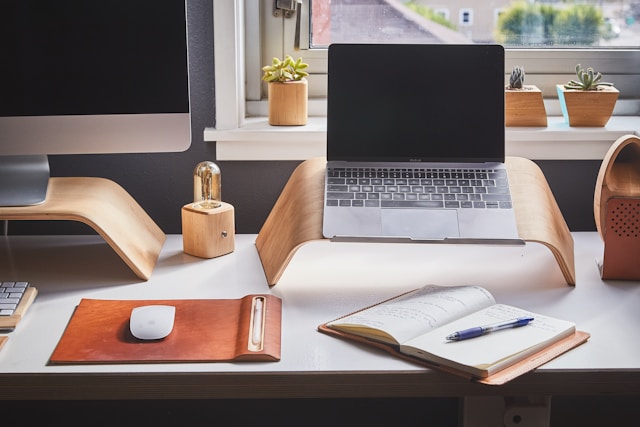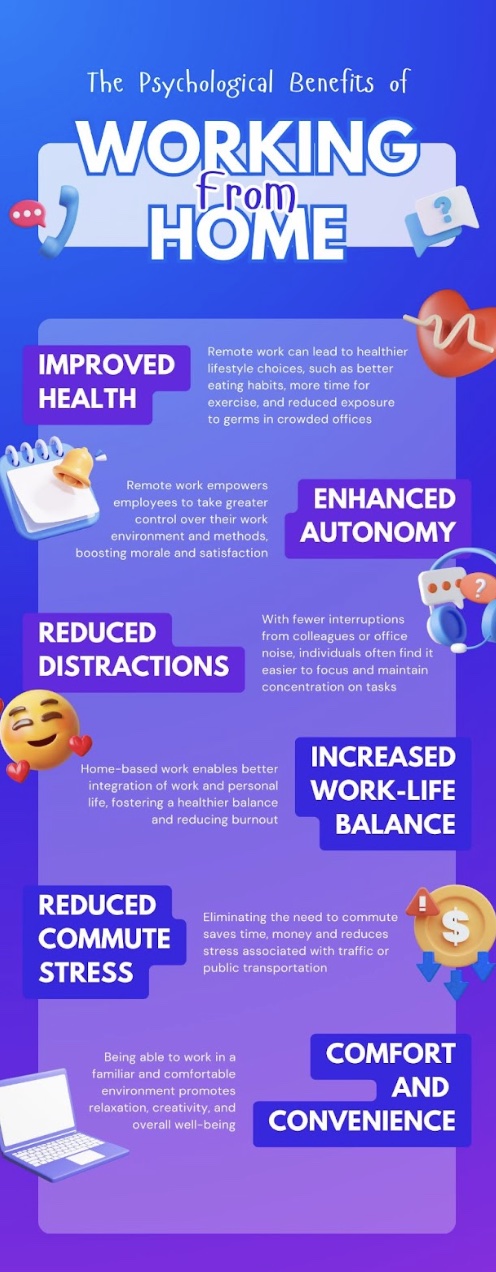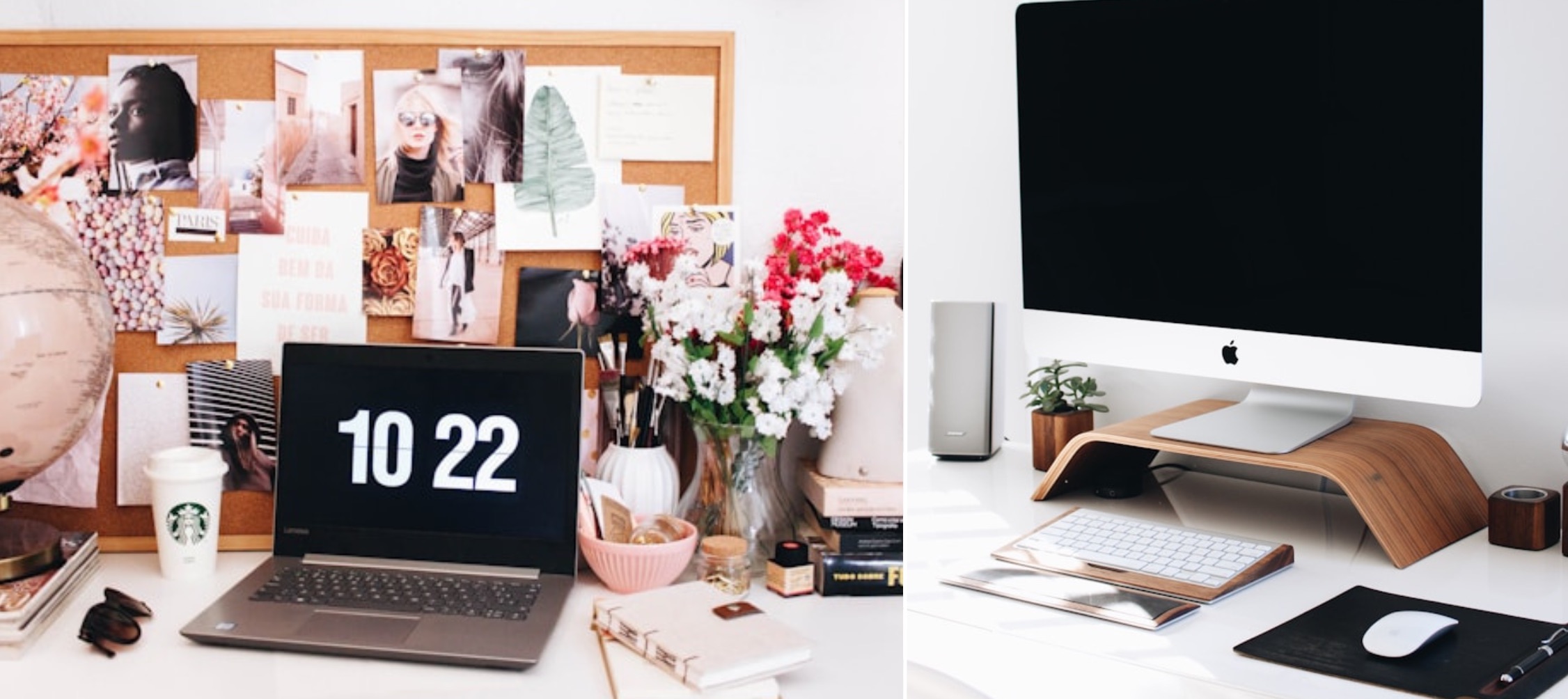Personalizing your home office can have a profound impact on your motivation and productivity. As remote work becomes increasingly common, with 71% of workers who can work from home doing so most of the time, the importance of a well-designed home office has never been greater.
Recent trends indicate that integrating natural elements, such as plants and earth-toned color schemes, can create a serene environment that boosts focus and well-being.

Adopting flexible furniture solutions that can be adjusted to suit different tasks helps create a dynamic and motivating workspace.
Statistics show that home workers are 13% more productive than their in-office counterparts, with improved mental well-being and reduced stress being significant contributors to this increase.
As we move forward in 2024, the emphasis on creating personalized, efficient, and comfortable home offices will continue to play a crucial role in maintaining high levels of motivation and productivity.
Personalizing Your Home Office For Greater Motivation
Creating a motivating home office environment requires an intentional design that aligns with your personal preferences and work needs.
By carefully considering elements like ergonomics, aesthetics, and technology, you can transform your workspace into a hub of productivity and creativity. Let’s go over how you can do it:
Integrate Biophilic Design
Biophilic design, which incorporates natural elements into your workspace, is a rising trend in 2024 that has been shown to enhance well-being and motivation. Introducing plants, natural light, and organic materials like wood and stone can create a tranquil environment that boosts focus and reduces stress.
A workspace infused with nature can help sync your circadian rhythm, leading to higher productivity and better mental clarity.
Consider adding a variety of plants that thrive indoors, such as succulents or ferns, and position your desk near a window to maximize natural light.
Prioritize Ergonomics And Comfort
A well-designed home office must prioritize ergonomic principles to ensure comfort and prevent physical strain.
Invest in an adjustable chair that supports your back and encourages proper posture. Pair this with a height-adjustable desk that allows you to alternate between sitting and standing, which can help maintain energy levels throughout the day.
Ergonomic accessories, such as a keyboard tray or a monitor stand, can further reduce the risk of repetitive strain injuries and keep you comfortable during long work hours.
Implement Smart Technology For Efficiency
Incorporating smart technology into your home office can streamline your workflow and reduce time spent on mundane tasks.
Automation tools, such as voice-controlled assistants or smart lighting systems, can be tailored to your work habits, making it easier to manage your environment and stay focused.
For example, smart lights that adjust color temperature based on the time of day can help maintain your energy levels, while noise-canceling devices can create a more peaceful working environment.
These innovations not only enhance efficiency but also contribute to a more modern and motivating workspace.

Designate A Dedicated Workspace
One of the most effective ways to boost motivation in your home office is by creating a dedicated workspace that is solely used for work.
This separation helps establish a clear boundary between your professional and personal life, which is crucial for maintaining focus and avoiding burnout. Choose a quiet area in your home that is free from distractions, and personalize it with items that inspire you, such as artwork or motivational quotes.
Ensuring that your workspace is only used for work-related activities can help condition your mind to enter “work mode” as soon as you step into the space, thereby increasing your productivity.
Incorporate Personal And Professional Goals
Your home office should be a place that not only supports your daily tasks but also inspires you to achieve your long-term goals.
Consider setting up a vision board where you can display your personal and professional goals, along with milestones and achievements. This visual reminder of what you are working toward can serve as a powerful motivator during challenging days.
Keeping a planner or digital task manager visible can help you stay organized and on track with both short-term and long-term objectives.
By surrounding yourself with reminders of your goals, you can maintain a strong sense of purpose and motivation.
Optimize Lighting And Acoustics
Proper lighting and acoustics are critical for creating a motivating home office environment. Poor lighting can cause eye strain and fatigue, while excessive noise can be a major distraction.
To optimize lighting, aim to maximize natural light during the day and use task lighting, such as desk lamps, for focused work. Consider using full-spectrum light bulbs that mimic natural sunlight, which can improve mood and energy levels.
For acoustics, if your workspace is in a noisy area, consider investing in soundproofing materials or noise-canceling headphones.
These adjustments can help create a calm and focused atmosphere, allowing you to concentrate on your work without unnecessary distractions.
Leverage Sensory Elements To Enhance Focus
Incorporating sensory elements into your home office can significantly boost motivation and concentration. This involves using sound, scent, and touch to create a workspace that stimulates your senses in a positive way.
For example, playing background music that suits your work style—whether it’s ambient sounds, instrumental music, or nature sounds—can help you maintain focus and reduce distractions.
Incorporating calming scents, such as lavender or rosemary, through essential oil diffusers or scented candles, can enhance your alertness and create a calming atmosphere. Consider textures in your workspace, such as soft rugs or ergonomic wrist supports, to add comfort and reduce physical stress.
These sensory enhancements can transform your home office into a place that not only supports productivity but also nurtures your overall well-being.

Endnote
Consider regularly refreshing your home office setup to keep it aligned with your evolving work habits and preferences.
This might involve rearranging furniture, updating decor, or incorporating new technology to keep the space stimulating and conducive to creativity.
By continuously adapting your workspace, you ensure it remains a source of inspiration and motivation in the long term.









